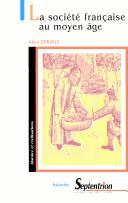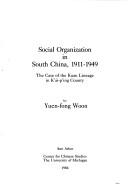| Listing 1 - 10 of 25 | << page >> |
Sort by
|
Book
ISBN: 8882815587 8882815145 Year: 2020 Publisher: Locarno Armando Dadò editore
Abstract | Keywords | Export | Availability | Bookmark
 Loading...
Loading...Choose an application
- Reference Manager
- EndNote
- RefWorks (Direct export to RefWorks)
Dal gennaio del 1798, in seguito all’intervento militare francese, nella Confederazione svizzera dei tredici cantoni l’antico regime si sgretola: alberi della libertà vengono issati un po’ ovunque. Nei baliaggi dei cantoni svizzeri al sud delle Alpi il processo è altrettanto rapido: personalità già attive nell’amministrazione e giovani borghesi agiscono assecondando il cambiamento in corso. Queste personalità dall’aprile del 1798 formeranno nella Svizzera sudalpina il personale politico della Repubblica elvetica, proclamata sotto l’egida della Francia post rivoluzionaria e, dal 1803, il ceto dirigente del canton Ticino, creato per volontà napoleonica nell’ambito del regime della Mediazione. Come hanno gestito i membri del ceto dirigente della Svizzera sudalpina, sul piano locale, le innovazioni e le trasformazioni indotte dall’intervento francese e ispirate dal pensiero illuminista? Cercando di rispondere a questa domanda, questo lavoro ricostruisce con minuzia il percorso di una ventina di personalità politiche tra il 1798 e il 1814, rilevando al contempo la loro capacità di mantenersi al potere in un periodo marcato da rivolte popolari, repentini cambiamenti di regime e onerose occupazioni militari.
Histoire --- Tessin --- Social classes --- History --- Ticino (Switzerland) --- Politics and government --- Class distinction --- Classes, Social --- Rank --- Caste --- Estates (Social orders) --- Social status --- Class consciousness --- Classism --- Social stratification --- Tessin (Switzerland)
Book
ISBN: 9502918223 Year: 2020 Publisher: Ciudad de Buenos Aires, Argentina : IIGG, Instituto de Investigaciones Gino Germani, Facultad de Ciencias Sociales, Universidad de Buenos Aires : CLACSO,
Abstract | Keywords | Export | Availability | Bookmark
 Loading...
Loading...Choose an application
- Reference Manager
- EndNote
- RefWorks (Direct export to RefWorks)
Clases sociales --- Encuestas demográficas --- Social classes --- Demographic surveys --- Estadísticas. --- Statistics. --- Population surveys --- Census --- Social surveys --- Class distinction --- Classes, Social --- Rank --- Caste --- Estates (Social orders) --- Social status --- Class consciousness --- Classism --- Social stratification

ISBN: 3486543512 3486595539 9783486543513 Year: 1988 Volume: 12 Publisher: München Oldenbourg
Abstract | Keywords | Export | Availability | Bookmark
 Loading...
Loading...Choose an application
- Reference Manager
- EndNote
- RefWorks (Direct export to RefWorks)
Social history --- Social mobility --- Social classes --- Congresses. --- History --- -Social history --- -Social mobility --- -Social classes --- -Class distinction --- Classes, Social --- Rank --- Caste --- Estates (Social orders) --- Social status --- Class consciousness --- Classism --- Social stratification --- Mobility, Social --- Sociology --- Descriptive sociology --- Social conditions --- Congresses --- -Congresses --- Class distinction --- History&delete& --- Social history - 16th century - Congresses. --- Social history - 17th century - Congresses. --- Social mobility - Europe - History - 16th century - Congresses. --- Social mobility - Europe - History - 17th century - Congresses. --- Social classes - Europe - History - 16th century - Congresses. --- Social classes - Europe - History - 17th century - Congresses.

ISBN: 2859396217 2757422022 Year: 2019 Volume: *4 Publisher: Villeneuve d'Ascq : Presses universitaires du Septentrion,
Abstract | Keywords | Export | Availability | Bookmark
 Loading...
Loading...Choose an application
- Reference Manager
- EndNote
- RefWorks (Direct export to RefWorks)
L’histoire étant l’étude des hommes en société, tout historien fait de l’histoire sociale, parfois magnifiquement, mais la société française dans sa longue durée n’a jamais trouvé son historien. Le sujet, qui est très complexe, a été ici attaqué sous deux angles. On a d’abord analysé les cadres sociaux, qui varient lentement, tels la famille et la parenté, les liens d’homme à homme, les cadres ruraux (village, paroisse, seigneurie) et les villes. Puis les classes sociales, qui dépendent des forces économiques et politiques, ont été étudiées en trois chapitres, 500-900, 900-1275, 1275-1500. En conclusion on s’est demandé, s’il y avait vers 1500 une société, une nation, une patrie française. La réponse a été nuancée, comme de juste.
Social classes --- Classes sociales --- History --- Histoire --- France --- Social conditions --- Conditions sociales --- Social structure --- To 987 --- 987-1515 --- Organization, Social --- Social organization --- Anthropology --- Sociology --- Social institutions --- Class distinction --- Classes, Social --- Rank --- Caste --- Estates (Social orders) --- Social status --- Class consciousness --- Classism --- Social stratification --- histoire --- société française --- histoire sociale --- Moyen-Âge --- cadre social --- force économique
Book
ISBN: 0814724299 9780814724293 9780814724309 0814724302 9780814767405 0814767400 9780814767412 0814767419 Year: 2012 Publisher: New York : New York University Press,
Abstract | Keywords | Export | Availability | Bookmark
 Loading...
Loading...Choose an application
- Reference Manager
- EndNote
- RefWorks (Direct export to RefWorks)
Since the Gilded Age, social scientists, middle-class reformers, and writers have left the comforts of their offices to "pass" as steel workers, coal miners, assembly-line laborers, waitresses, hoboes, and other working and poor people in an attempt to gain a fuller and more authentic understanding of the lives of the working class and the poor. In this first, sweeping study of undercover investigations of work and poverty in America, award-winning historian Mark Pittenger examines how intellectuals were shaped by their experiences with the poor, and how despite their sympathy toward working-class people, they unintentionally helped to develop the contemporary concept of a degraded and "other" American underclass. While contributing to our understanding of the history of American social thought, Class Unknown offers a new perspective on contemporary debates over how we understand and represent our own society and its class divisions.
Poverty --- Working class --- Social classes --- Investigative reporting --- Social classes in mass media. --- Class distinction --- Classes, Social --- Rank --- Caste --- Estates (Social orders) --- Social status --- Class consciousness --- Classism --- Social stratification --- Mass media --- Destitution --- Wealth --- Basic needs --- Begging --- Poor --- Subsistence economy --- Reporting, Investigative --- Reporters and reporting --- History
Book
ISBN: 9780814790571 9780814790588 9780814790595 9780814744673 0814790593 0814744672 0814790577 0814790585 Year: 2013 Publisher: New York, N.Y. New York University Press
Abstract | Keywords | Export | Availability | Bookmark
 Loading...
Loading...Choose an application
- Reference Manager
- EndNote
- RefWorks (Direct export to RefWorks)
Love and Money argues that we can’t understand contemporary queer cultures without looking through the lens of social class. Resisting old divisions between culture and economy, identity and privilege, left and queer, recognition and redistribution, Love and Money offers supple approaches to capturing class experience and class form in and around queerness.Contrary to familiar dismissals, not every queer television or movie character is like Will Truman on Will and Grace—rich, white, healthy, professional, detached from politics, community, and sex. Through ethnographic encounters with readers and cultural producers and such texts as Boys Don’t Cry, Brokeback Mountain, By Hook or By Crook, and wedding announcements in the New York Times, Love and Money sees both queerness and class across a range of idioms and practices in everyday life. How, it asks, do readers of Dorothy Allison’s novels use her work to find a queer class voice? How do gender and race broker queer class fantasy? How do independent filmmakers cross back and forth between industry and queer sectors, changing both places as they go and challenging queer ideas about bad commerce and bad taste?With an eye to the nuances and harms of class difference in queerness and a wish to use culture to forge queer and class affinities, Love and Money returns class and its politics to the study of queer life.
Social stratification --- Sociology of culture --- Sociology of the family. Sociology of sexuality --- United States --- Gays in mass media. --- Social classes. --- Homosexuality --- Gays --- Mass media --- Class distinction --- Classes, Social --- Rank --- Caste --- Estates (Social orders) --- Social status --- Class consciousness --- Classism --- Gay people --- Gay persons --- Homosexuals --- Persons --- Social aspects. --- Social conditions. --- United States of America --- Gay people in mass media.

ISBN: 047212823X 0892640480 Year: 1984 Publisher: Ann Arbor, Michigan : University of Michigan Press,
Abstract | Keywords | Export | Availability | Bookmark
 Loading...
Loading...Choose an application
- Reference Manager
- EndNote
- RefWorks (Direct export to RefWorks)
Social structure --- Social classes --- Kinship --- Kuan family. --- Kaiping Shi (China) --- Social conditions. --- Ethnology --- Clans --- Consanguinity --- Families --- Kin recognition --- Class distinction --- Classes, Social --- Rank --- Caste --- Estates (Social orders) --- Social status --- Class consciousness --- Classism --- Social stratification --- Organization, Social --- Social organization --- Anthropology --- Sociology --- Social institutions --- Kaiping Xian (China)
Book
ISBN: 9789004515338 9789004519800 9004519807 900451533X Year: 2022 Publisher: Leiden Brill
Abstract | Keywords | Export | Availability | Bookmark
 Loading...
Loading...Choose an application
- Reference Manager
- EndNote
- RefWorks (Direct export to RefWorks)
Which were the mechanisms by which certain groups were positioned at the margins of national narratives during the nineteenth century, either via their exclusion from these narratives of through their incorporation into them as ‘others’? By engaging with shifting ideas of exclusion and difference, the authors in this book reflect upon the paradoxical centrality of the subaltern at a time when literature was deployed as a tool for nation building. The lasting presence of the Jewish and Moorish legacy, the portrayal of gypsy characters, or the changing notions of femininity in public discourse exemplify the ways in which images of marginal ‘types’ played a central role in the configuration of the very idea of Spanishness. ¿Cuáles fueron los mecanismos mediante los que ciertos grupos fueron relegados a los márgenes del relato nacional durante el siglo XIX, bien a través de su exclusión de dichos relatos, bien a través de su incorporación a ellos como "otros"? A través del análisis de las ideas de exclusión y diferencia, los autores de este libro reflexionan sobre la paradójica centralidad de lo marginal en una época en la que la literatura fue una herramienta fundamental para la construcción de la nación. La pervivencia del legado judío y morisco, la representación de personajes gitanos o las distintas nociones de feminidad presentes en el discurso público ejemplifican las formas en que las imágenes de "tipos" marginales desempeñaron un papel central en la configuración de la idea de españolidad.
Spanish literature --- anno 1800-1899 --- Other (Philosophy) in literature. --- National characteristics, Spanish, in literature. --- History and criticism. --- Social classes. --- Social history. --- History. --- Descriptive sociology --- Social conditions --- Social history --- History --- Sociology --- Class distinction --- Classes, Social --- Rank --- Caste --- Estates (Social orders) --- Social status --- Class consciousness --- Classism --- Social stratification
Book
ISBN: 9780691124575 0691124574 Year: 2006
Abstract | Keywords | Export | Availability | Bookmark
 Loading...
Loading...Choose an application
- Reference Manager
- EndNote
- RefWorks (Direct export to RefWorks)
Dinners and dining --- Posture --- Social classes --- Repas --- Classes sociales --- Rome --- Civilization. --- Social life and customs. --- Civilisation --- Moeurs et coutumes --- History. --- Rome (Italy) --- Class distinction --- Classes, Social --- Rank --- Caste --- Estates (Social orders) --- Social status --- Class consciousness --- Classism --- Social stratification --- Body position --- Erect position of human beings --- Position, Body --- Human beings --- Stature --- Banquets --- Dining --- Eating --- Meals --- Caterers and catering --- Entertaining --- Etiquette --- Cooking --- Gastronomy --- Menus --- Table --- History --- Attitude and movement
Book
ISBN: 2882470533 294054963X Year: 2004 Volume: 15 Publisher: Paris Presses universitaires de France
Abstract | Keywords | Export | Availability | Bookmark
 Loading...
Loading...Choose an application
- Reference Manager
- EndNote
- RefWorks (Direct export to RefWorks)
Comment penser la sociabilité en Afrique aujourd’hui ? La formule toponymique choisie – côté jardin, côté cour – comme emblème thématique de ce Cahier fait explicitement référence au passage d’un roman de Tchicaya U Tam’Si. Cet extrait renvoie à la métaphore de la maison, lieu où l’on reste, lieu où l’on revient. Le côté jardin, c’est non seulement la science, mais aussi la civilisation occidentale importée avec la colonisation et la réalité apparente des hommes et des choses dans le monde visible des vivants, alors que le côté cour, c’est le fétiche, c’est-à-dire la magie, la sorcellerie et le monde invisible des esprits et des morts. Comment peut-on être à la fois magicien et magistrat, sorcier et président de la République dans une même peau humaine ?...
Dwellings --- Habitations --- Social aspects --- Aspect social --- Africa --- Afrique --- Social conditions --- Conditions sociales --- Government --- Economic conditions. Economic development --- Ethnology. Cultural anthropology --- Political culture --- Social classes --- Politics and government --- Class distinction --- Classes, Social --- Rank --- Caste --- Estates (Social orders) --- Social status --- Class consciousness --- Classism --- Social stratification --- Culture --- Political science --- Eastern Hemisphere --- anthropologie économique --- sciences sociales --- postcolonialisme --- pays en voie de développement --- migrations et réfugiés --- tradition --- relations culturelles --- politique contemporaine
| Listing 1 - 10 of 25 | << page >> |
Sort by
|

 Search
Search Feedback
Feedback About UniCat
About UniCat  Help
Help News
News